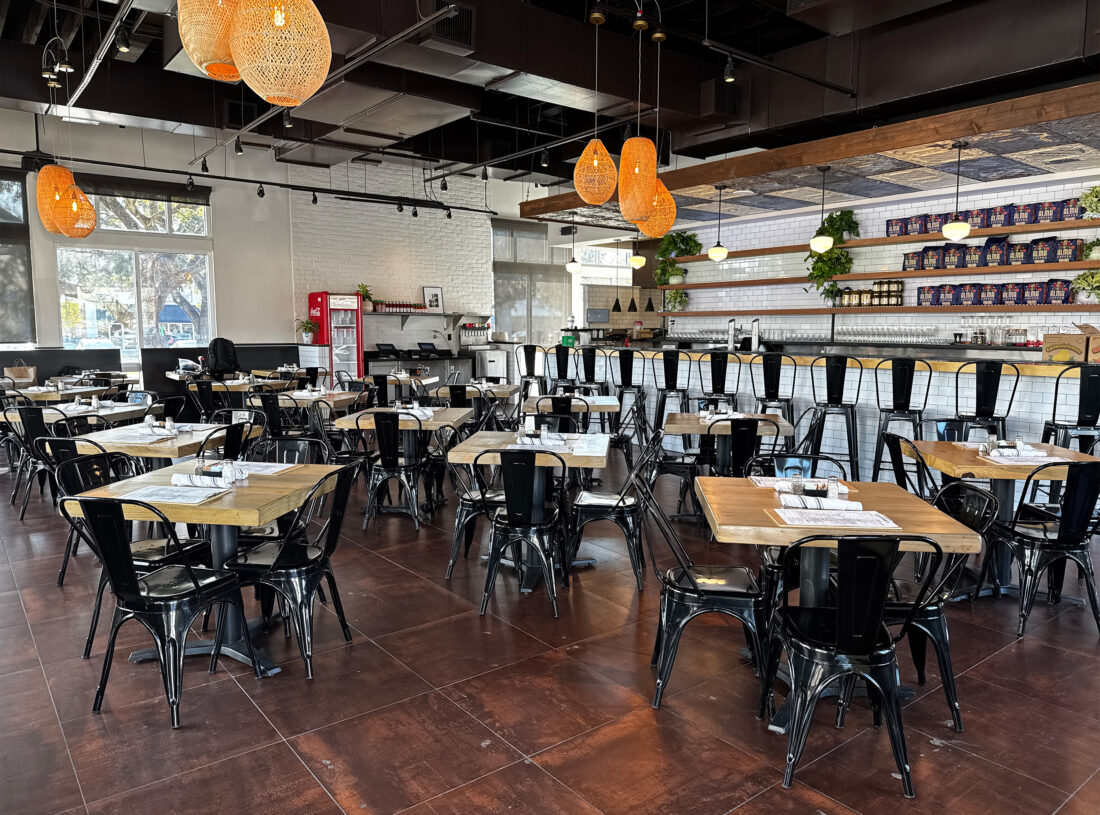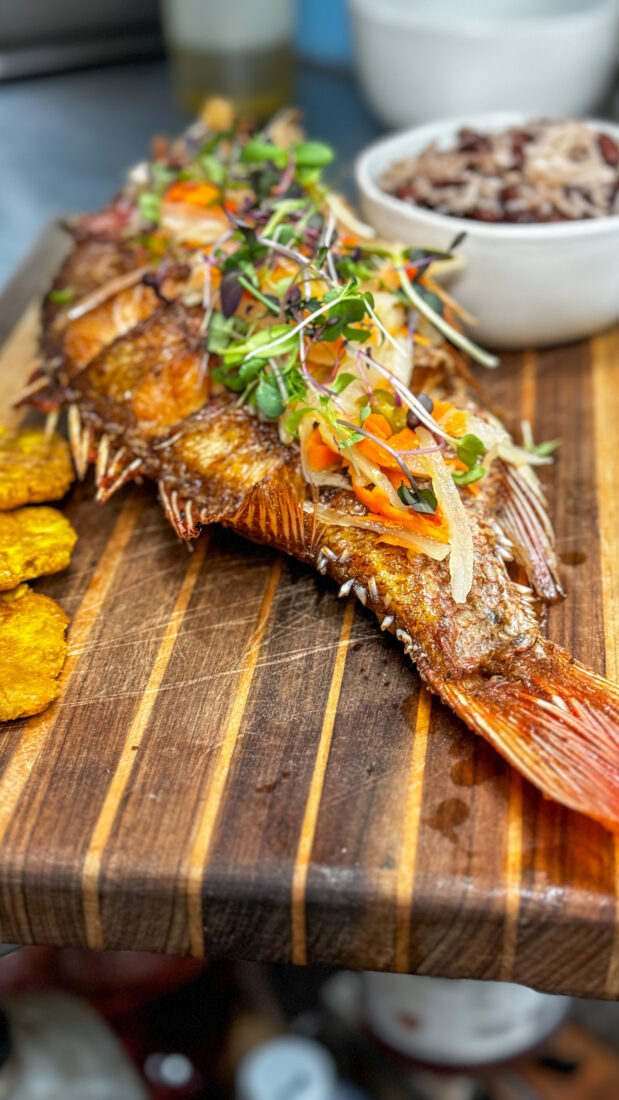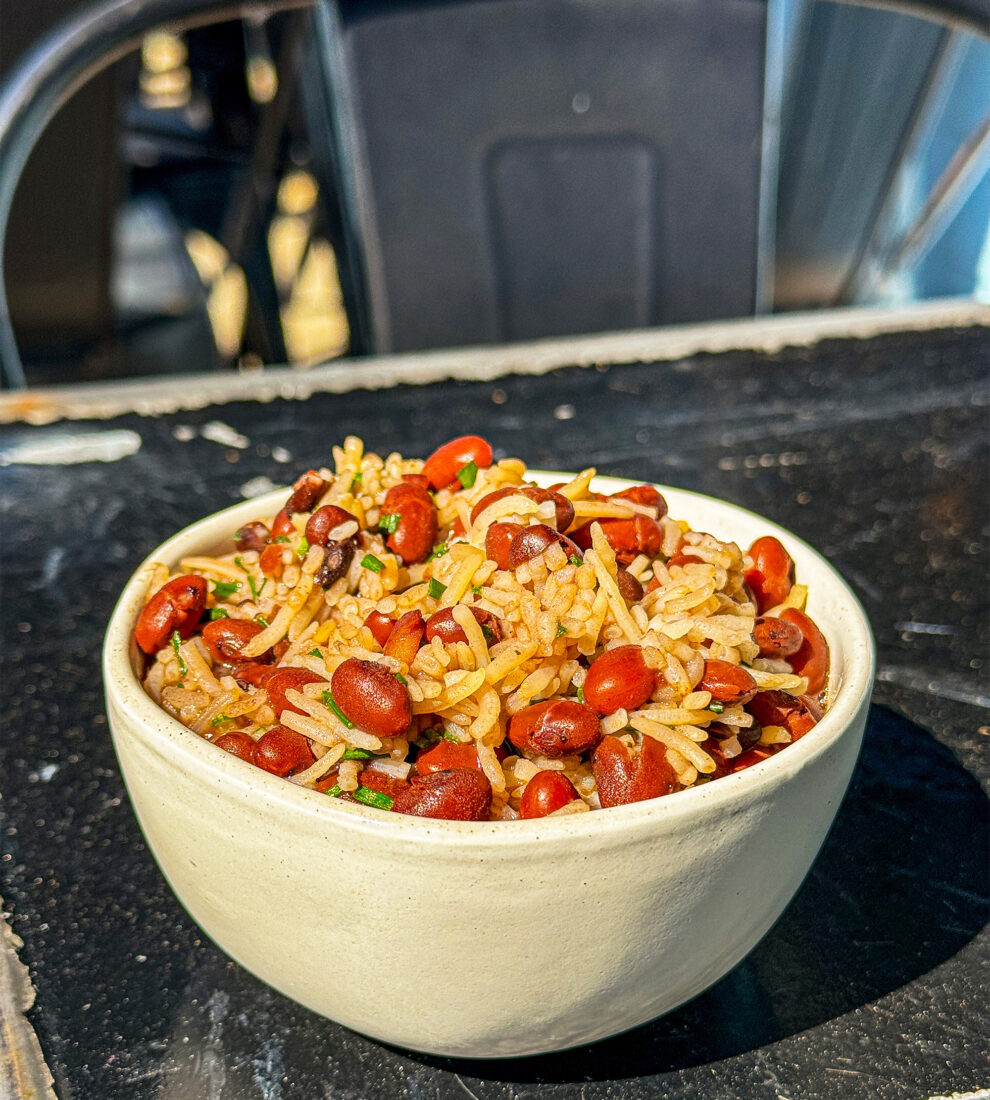Alma in Mid-City New Orleans buzzes as chef/owner Melissa Araujo bounces from table to table, greeting customers. Head bartender Mark Preston, in a floor-length purple cape and fedora with a large peacock plume, welcomes guests at the bar. Even with two hundred seats, this newly opened second location of Araujo’s lauded Bywater café feels cozy and familial, like a traditional Honduran kitchen.

Born in La Ceiba, Honduras, Araujo and her family moved to Providence, Rhode Island, when she was a toddler. When she was fourteen, they moved again to New Orleans, a city with a deep connection—generations of their family immigrated from Honduras to settle there. The name “Alma” means soul in Spanish, and for Araujo, it captures what she pours into every dish.

“My grandmother’s kitchen was where I first learned that food is love,” she says. “Alma isn’t just a restaurant; it’s a community. Expanding within the city allows me to bring that experience to more people while also creating opportunities for my team to grow. Each location has its own energy, and I want to keep building spaces where people feel at home.”
The Mid-City spot includes an oyster bar and a dedicated tortilleria on site. Fresh juices, house-made syrups, and agua frescas showcase the produce and herbs grown in Araujo’s at-home garden. Alma’s coffee bar features a variety of Honduran beans, and, like her Bywater location, the restaurant celebrates Araujo’s memories of home cooking. “Beyond just a full belly, I want people to leave Alma feeling like they were taken care of,” she says. “Food is emotional—it’s about connection, nostalgia, and sometimes even healing.”

The menu features an all-day brunch with standouts like her baleada sencilla (eggs, refried beans, house-made cream, queso fresco, and avocado served atop a house-made tortilla). Other highlights include hongos en crema (locally sourced mushrooms with cashew cream and herbs) and the pescado ceibeno, whatever fresh Gulf fish is available, deep fried and served with tostones and escabeche. There’s confit duck with a dark sauce brimming with toasted chiles, and her sister’s recipe for the perfectly moist tres leches cake.

One of the restaurant’s most comforting dishes is Araujo’s Moros y Cristianos, a Honduran riff on Louisiana red beans and rice. Cooked with coconut milk and herbs, the dish has roots in the cuisine of the Garifuna community in Honduras, which blends the cooking traditions brought by enslaved West Africans with ingredients from the Caribbean and figures prominently on the menu at both locations. “The Garifuna people have a beautiful tradition of cooking with coconut milk, and that flavor profile—rich, deep, and comforting—feels like home to me,” she says. “I love how it adds this velvety texture and subtle sweetness, making it both nourishing and deeply satisfying. It’s a dish that tells a story of migration, resilience, and culture, and I love sharing that through food.”








